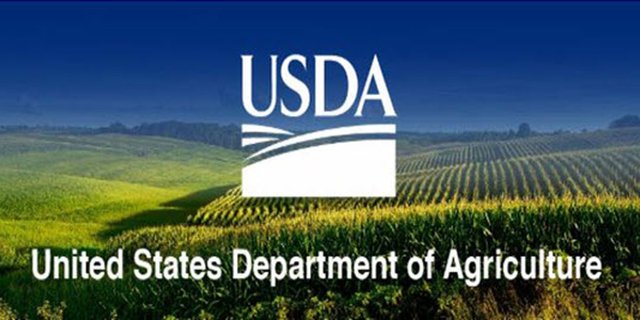Jobs
USDA invests over $24M to lower energy costs and create jobs in rural Wis. communities

DARLINGTON — U.S. Department of Agriculture (USDA) Rural Development Wisconsin State Director Julie Lassa recently announced that the Department is investing over $24 million in rural communities through the Rural Energy for America Program (REAP) to lower energy costs and create jobs in Wisconsin. Twelve grants and one loan will allow 13 rural Wisconsin businesses to install renewable energy systems or become more energy efficient.
“The Rural Energy for America Program helps farmers and rural small businesses purchase and install renewable energy systems and make energy efficiency improvements,” Lassa said. “Through the USDA, the Biden-Harris Administration is partnering with small business owners and ag producers to help them save money on their bottom line, expand their businesses and become more energy independent.” [Audio: Mp3 22 seconds 192 kb]
Among the REAP projects announced are several solar arrays, grain drying systems, and a dairy manure anaerobic digester. The latest projects announced in Wisconsin are as follows:
● In Lafayette and Grant counties, a $25,648 loan will help John Kieler, an agricultural producer, install a small solar electric array in Hazel Green. This project is expected to save $2,555 per year. It will replace 20,441 kilowatt hours (kWh) (100% of the company’s energy use) per year, which is enough energy to power one home.
● In Brown County, a $22,638,000 loan will help Tinedale Project, LLC develop and operate a dairy manure anaerobic digester. The digester is projected to capture 128,787MM British Thermal Units of bio-methane. The methane will be converted to renewable natural gas on site then transported through a local utility natural gas pipeline. The project is expected to create three jobs.
● In Calumet County, a $91,553 grant will be used to help Fairway to Heaven LLC install a small solar electric array in Sherwood. This project is expected to save $3,105 per year.
● In Grant County, a $29,500 grant will be used to help Jay Richard, an agricultural producer, install a roof-mounted solar electric array in Kieler. This project is expected to save $6,652 per year. It will replace 28,488 kilowatt hours (kWh) (56 percent of the company’s energy use) per year, which is enough energy to power two homes.
● In Marathon County, a $24,901 grant will be used to help Kenneth Scheiderer, an agricultural producer, install a small solar electric array in Edgar. This project is expected to save $3,050 per year. It will replace 24,600 kilowatt hours (kWh) (100 percent of the company’s energy use) per year, which is enough energy to power two homes.
● In Marquette County, a $84,002 grant will be used to help Spring Lake Farms, Inc., an agricultural producer, purchase and install a more energy-efficient grain dryer in Neshkoro. This project is expected to save the producer $15,086 per year.
● In Monroe County, a $361,372 grant will be used to help Douglas Fries install a more energy efficient grain dryer in Norwalk. This project is expected to save $15,880 per year. It will save 215,206 kilowatt hours (kWh) (38 percent of the farm’s energy use) per year, which is enough energy to power 19 homes.
● In Pierce County, a $203,096 grant will be used to help Knutson Family Farms, Inc. install a more energy efficient grain dryer in Beldenville. This project is expected to save $22,670 per year. It will save 499,631 kilowatt hours (kWh) (69 percent of the farm’s energy use) per year, which is enough energy to power 46 homes.
● Also in Pierce County, a $109,168 grant will be used to help Robert Fenske, a corn and soybean crop farming operation, install a grain drying system in Ellsworth. This project is expected to save $16,620 per year. It will replace 321,309 kilowatt hours (kWh) (62 percent of the company’s energy use for grain drying) per year, which is enough energy to power 29 homes.
● In Polk County, a $747,432 grant will be used to help MacDonald & Owen Veneer and Lumber Co. install a solar electric array in the Village of Luck. The project is expected to save $113,355 per year. It will replace 1,352,565 kilowatt hours (kWh) (100 percent of the business’s energy use) per year, which is enough energy to power 124 homes.
● In Portage County, a $99,212 grant will be used to help Andrew Gruna, an agricultural producer, purchase and install a more energy-efficient grain dryer in Rosholt. The system is expected to save the company $8,722 per year in energy costs.
● In Vernon County, a $25,495 grant will be used to help Jonathan Levendoski, an agricultural producer, install a ground mount solar electric array in Genoa. This project is expected to save $2,987 per year. It will replace 26,432 kilowatt hours (kWh) (100 percent of the company’s energy use) per year, which is enough energy to power two homes.
● In Vilas County, a $29,480 grant will be used to help Michael Sailer, a construction operation, install a small solar electric array in Sayner. This project is expected to save the company $1,676 per year. It will replace 34,397 kilowatt hours (kWh) (100 percent of the company’s energy use) per year, which is enough energy to power three homes.
The REAP program has seen record demand in response to historic funding provided by President Biden’s Inflation Reduction Act.
REAP enables agricultural producers and rural small business owners to expand their use of wind, solar, geothermal and small hydropower energy and make energy efficiency improvements. These innovations help them increase their income, grow their businesses and address climate change while lowering energy costs for American families.
Since January 2021, USDA has invested more than $2.3 billion through REAP in 7,923 renewable energy and energy efficiency improvements, including over $66.7 million for more than 233 projects right here in Wisconsin.
This is the final REAP funding availability from the Inflation Reduction Act. USDA is accepting 67 applications in this first round through two windows. The deadlines to apply are Dec. 31, 2024, and March 31, 2025. For additional information, contact a local energy coordinator.
USDA Rural Development provides loans and grants to expand economic opportunities, create jobs and improve the quality of life for millions of Americans in rural areas. REAP is a part of the President’s Justice40 Initiative which sets a goal that 40% of the benefits from certain federal investments go to disadvantaged communities that are marginalized by underinvestment and overburdened by pollution. USDA Rural Development supports infrastructure improvements; business development; housing; community facilities such as schools, public safety and health care; and high-speed internet access in rural, tribal and high-poverty areas. Visit the Rural Data Gateway to learn how and where these investments are impacting rural America. To subscribe to USDA Rural Development updates, visit the GovDelivery Subscriber Page.
USDA touches the lives of all Americans each day in so many positive ways. Under the Biden-Harris Administration, USDA is transforming America’s food system with a greater focus on more resilient local and regional food production, fairer markets for all producers, ensuring access to safe, healthy and nutritious food in all communities, building new markets and streams of income for farmers and producers using climate-smart food and forestry practices, making historic investments in infrastructure and clean energy capabilities in rural America, and committing to equity across the Department by removing systemic barriers and building a workforce more representative of America. To learn more, visit www.usda.gov.










